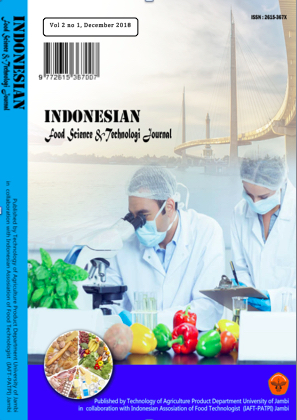The Environmental effects on fortified palm olein in the Anthropocene
DOI:
https://doi.org/10.22437/ifstj.v2i1.6421Abstract
Until now, no literature exists to explain about the impact of time, and environmental parameters, when using typical commercial grade transparent linear low density polyethylene (LLDPE) packaging for protecting vegetable cooking oil during typical shelf-life conditions. We tested long-term impact of temperature and illuminance (light: 100 to 150 lux and darkness <1 lux) on refined bleached deodorized palm olein (RBDPOL), fortified with vitamin A. Results showed degradation of fortified RBDPOL with 70 ppm vitamin A was approximately 15% at 18-22oC in Light, 10% at 18-22oC in Darkness, 19% at 32-33oC in light and 17% 32-33oC in darkness. Similar trend was observed at 45 ppm vitamin A.
Exposure to heat and light impacted vitamin A degradation, but is primarily attributed to temperature, irrespective of packaging. This investigation builds on our previous work (Silalahi et al., 2017), and confirms the impact of challenging environmental conditions on vegetable cooking oil shelf-life over long time periods.
Downloads
Downloads
Published
Versions
- 2018-12-20 (1)
- 2018-12-20 (1)
How to Cite
Issue
Section
License
Copyright (c) 2018 Indonesian Food Science & Technology Journal

This work is licensed under a Creative Commons Attribution 4.0 International License.







